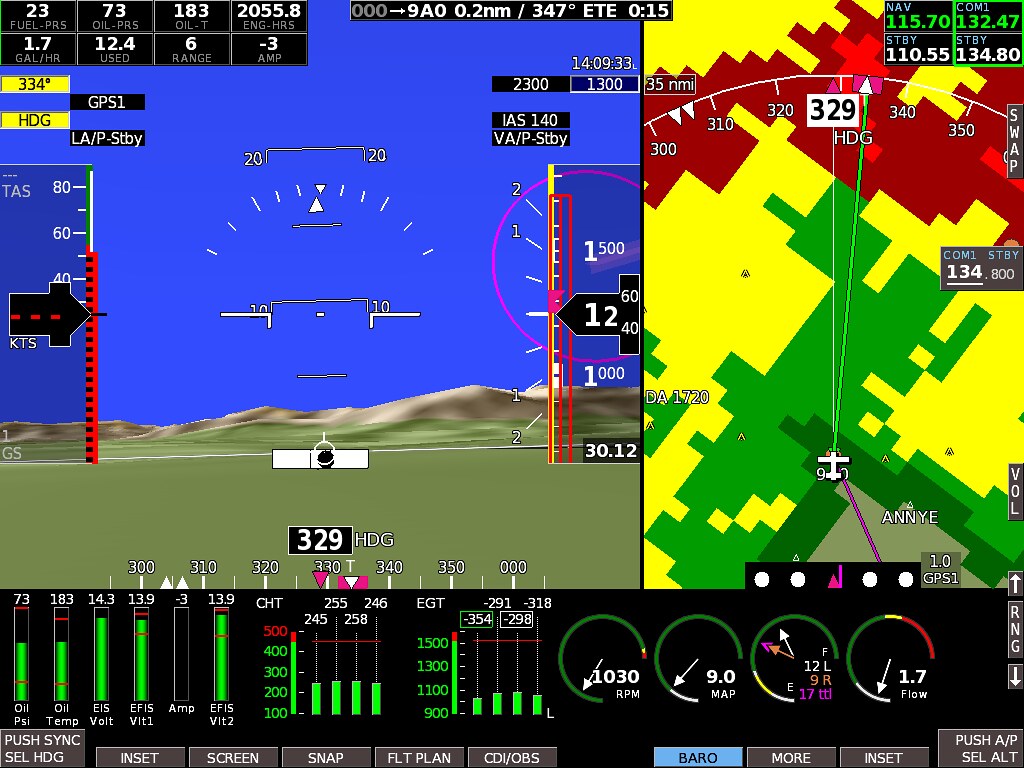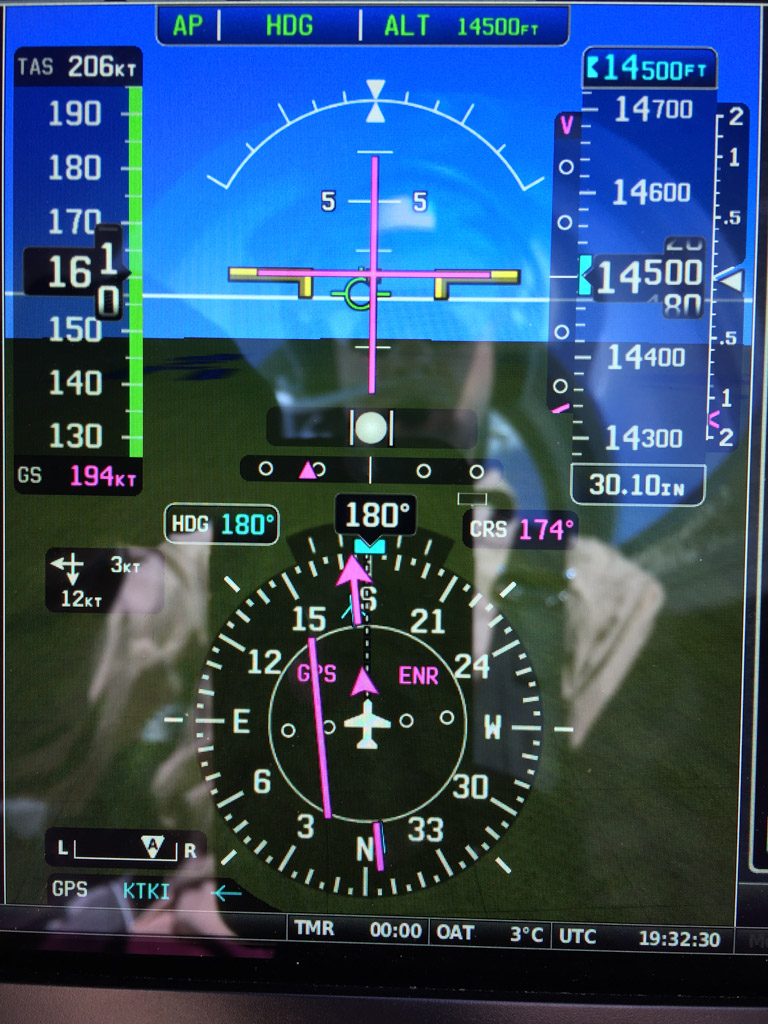It would take me many hours of training to get back comfortable with a 6 pack, if ever. I never really was comfortable in all my IFR training with a 6 pack. I was immediately comfortable with an EFIS.
The horizontal white line is adjustable location with the pitch ladder offset that will move it up and down relative. I have mine on horizon level cruise flight. Its amazing to see the different location based on angle of attack, which changes with weight and altitude.
That's why EFIS was invented.
When Boeing presented EFIS with the 767, some took to it like ducks to water. Others did not. They were very good with the basic 6 pack, could make quarter dot pitch changes on an ILS approach using flight director. It worked very well day in and night out.
I much preferred the new EFIS system but its been a while. There was no synthetic vision in the beginning. In the early days when paper approach charts were mandatory, they contained a lot of information that kept a flight safe but to have all of it on the screen would be a distraction, making a quarter dot correction would be difficult. Is that what synthetic vision does? Flying the approach on auto pilot would be best, the pilot simply monitors what is going on.
The company I worked for had the policy where the first officer flew the approach, either by hand or autopilot, the captain monitored until the runway was in sight and he landed the airplane, unless it was CAT 3 where the autopilot did the landing including auto braking, now isn't that sweet!!
Synthetic vision may be a consequence of technology. Like the atomic clock, something invented and a use was found for it later. The atomic clock will keep almost perfect time for 400,000 years. Some years after its perfection, GPS was invented.
Another byproduct of all this was proof Einstein was correct, traveling at any speed slows time. The clocks in the GPS system are calibrated to account for the greater speed of the satellites. it was also proven early on, an atomic clock traveling around the globe in a jet airplane recorded a different time than its mate on the ground that did not make the trip.
Thats why flight crews sometimes appear ageless, but not always.









